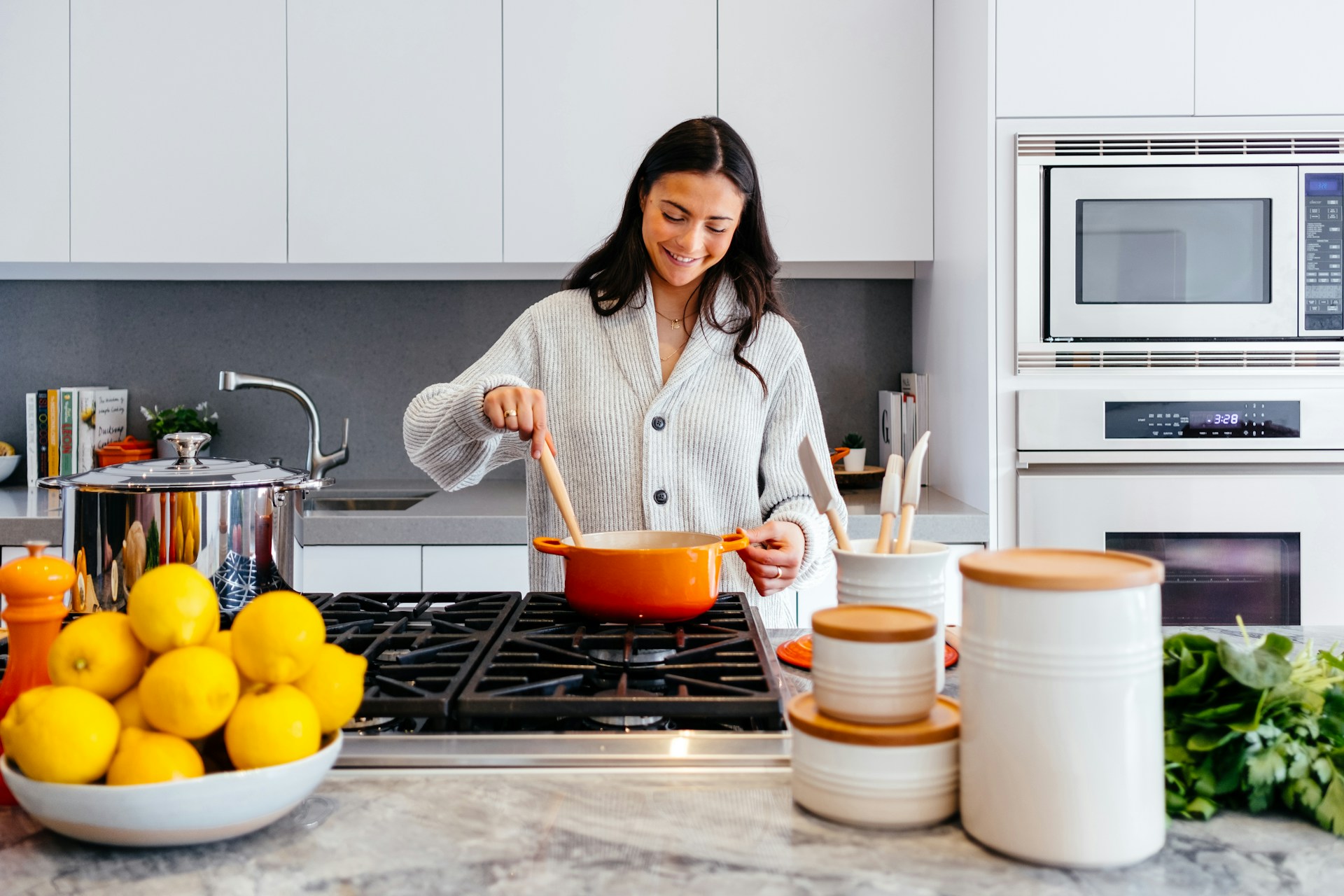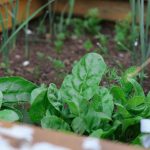Transform Your Kitchen: Innovative Strategies to Reduce Food Waste Effortlessly
Understanding the Impact of Food Waste
Food waste is a significant issue that affects not only your wallet but also the environment. According to the European Commission, millions of tons of perfectly good food end up in the trash every year, contributing to greenhouse gas emissions and increasing overall waste.
To tackle this problem, it’s essential to understand where food waste originates in your kitchen. Here are some key areas to focus on:
Also to read : Top Flooring Materials to Endure the Demands of a Busy Kitchen
- Overbuying: Often, we purchase more food than we can consume, leading to expired or spoiled items.
- Poor Storage: Inadequate food storage can shorten the shelf life of your groceries.
- Lack of Planning: Without a meal plan, you might end up with leftovers that go to waste.
Planning and Organization: The First Steps to Reducing Food Waste
Make a Plan
The first step in reducing food waste is to plan your meals. This involves assessing what you already have in your fridge, freezer, and pantry to avoid buying unnecessary items. Here’s how you can do it:
- Weekly Meal Plan: Create a weekly meal plan based on the ingredients you already have at home. For example, if you have leftover rice, plan a stir-fry for dinner or a rice pudding for dessert later in the week.
- Shopping List: Make a shopping list based on your meal plan to ensure you only buy what you need.
- Use Up What You Have: Before shopping, take stock of what you already have in your kitchen. This helps in using up items that might otherwise go to waste.
Organize Your Kitchen
A well-organized kitchen is crucial for reducing food waste. Here are some tips:
Have you seen this : Top Flooring Materials to Endure the Demands of a Busy Kitchen
- Label and Date: Label and date all stored food items so you know what you have and how long it has been there.
- First In, First Out: Ensure that older items are used before newer ones to prevent expiration.
- Visible Storage: Use transparent containers and bags to make sure you can see what’s inside without having to open them.
Creative Use of Leftovers
Leftovers are a common source of food waste, but they can be transformed into new and exciting meals with a bit of creativity.
Transform Leftovers
Here are some creative ways to use leftovers:
- Soups and Stews: Leftover vegetables can be blended into a soup or added to a stew.
- Frittatas and Risottos: Small amounts of leftovers can be turned into frittatas or risottos.
- Tacos and Quesadillas: Shredded leftover chicken or beef can be used to make tacos or quesadillas.
Examples from Top Chefs
The European Commission’s Zero Waste, More Taste! campaign features recipes from top European chefs that show how to turn would-be scraps into culinary masterpieces. For instance:
- Swedish Kroppkakor: A modern take on traditional Swedish dumplings using leftover ingredients like breadcrumbs, meat, and apples.
- Italian Supplì alla Romana: This traditional dish from Rome gives new life to leftover rice and can be enjoyed year-round.
Efficient Food Storage and Preservation
Proper food storage is key to extending the shelf life of your groceries and reducing waste.
Vacuum Storage
Vacuum storage is a technique that involves removing the air from bags and containers to prolong the shelf life of food. Here are some benefits and tips:
- Benefits: Vacuum storage helps in preserving the freshness of food, reducing the risk of spoilage, and saving space in your fridge and freezer.
- Tips: Use vacuum storage bags and containers for items like meats, vegetables, and fruits. This method is straightforward to incorporate into your daily routine.
Smart Refrigeration
Smart refrigerators have advanced features that can help in managing your food storage more efficiently:
- Expiration Tracking: Some smart refrigerators can track the expiration dates of your groceries and remind you when items are near expiration.
- Internal Cameras: These refrigerators often come with internal cameras that allow you to view the contents remotely via your smartphone, reducing the need for repeated trips to the grocery store.
Reducing Plastic Use and Choosing Eco-Friendly Appliances
Reducing plastic use and choosing energy-efficient appliances are crucial steps towards making your kitchen more sustainable.
Reduce Plastic Use
Here are some ways to reduce plastic use in your kitchen:
- Reusable Bags and Containers: Use reusable bags and containers for storing food instead of plastic bags.
- Eco-Friendly Cleaning Products: Choose eco-friendly cleaning products that are free from harmful chemicals and better for the environment.
Energy-Efficient Appliances
Investing in energy-efficient appliances can significantly reduce your environmental impact and save you money on utility bills:
- Energy Labels: Look for appliances with energy labels that indicate they are energy-efficient.
- Smart Appliances: Modern smart appliances are designed to use less energy and water. For example, smart dishwashers can sense the size of the load and use only the necessary water for a thorough cleaning cycle.
Practical Tips for Reducing Food Waste
Here are some practical tips to help you reduce food waste in your kitchen:
Portion Control
Serving smaller portions can prevent food from being wasted. If family members are still hungry, they can always take seconds.
Freeze Extras
Freeze portions of food that you won’t eat right away. This helps preserve meals for future use and ensures nothing goes to waste.
Use Up Wilting Produce
Vegetables that are starting to wilt don’t have to be thrown away. Use them in soups, smoothies, or stews where texture is less important but flavor is key.
Compost
If you have a garden, composting is a great way to turn food scraps into nutrient-rich soil. Items like fruit peels, coffee grounds, and eggshells can decompose naturally and reduce your household waste.
Table: Comparative Benefits of Different Strategies
| Strategy | Benefits | Environmental Impact | Cost Savings |
|---|---|---|---|
| Meal Planning | Reduces overbuying, ensures use of existing ingredients | Reduces waste, lowers emissions | Saves money on groceries |
| Vacuum Storage | Extends shelf life, reduces spoilage | Reduces waste, saves resources | Saves money on food replacement |
| Smart Refrigeration | Tracks expiration, optimizes storage | Reduces energy consumption | Saves money on utility bills |
| Portion Control | Prevents overeating, reduces leftovers | Reduces waste | Promotes healthier eating |
| Freezing Extras | Preserves food for future use | Reduces waste | Saves money on future meals |
| Composting | Turns scraps into nutrient-rich soil | Reduces landfill waste | Saves money on fertilizers |
Quotes from Experts and Chefs
- “Reducing food waste in the home can be both easy and exciting. With a little creativity, these would-be scraps can be turned into culinary masterpieces.” – European Commission, Zero Waste, More Taste! campaign.
- “Vacuum storage is very straightforward to incorporate into your daily routine and offers a number of benefits, including preserving the freshness of food and reducing the risk of spoilage.” – Laica Blog.
The Future of Sustainable Kitchens
The kitchen of the future is designed to support sustainable practices and reduce waste through innovative technologies and smart design.
Integrated Composting Systems
Modern kitchens may include integrated composting systems that help process household waste and divert organic waste from landfills.
Multi-Functional Appliances
Smart appliances that can perform multiple functions streamline kitchen operations, reducing the need for multiple energy-consuming appliances and lowering overall consumption.
Personalization and Customization
Kitchens are becoming more personalized, with modular designs and smart appliances that adapt to individual lifestyles and needs. This personalization helps eliminate inefficiencies and ensures that only the necessary energy is used for each task.
Transforming your kitchen into a sustainable and waste-reducing space is not just about saving money; it’s about making a significant impact on the environment. By planning your meals, creatively using leftovers, employing efficient food storage techniques, reducing plastic use, and choosing eco-friendly appliances, you can significantly reduce food waste.
Remember, every small change you make in your kitchen can contribute to a more sustainable future. Whether it’s using vacuum storage, freezing extras, or composting food scraps, these strategies not only help reduce waste but also promote healthier eating habits and save you money in the long run.
So, take the first step today and make your kitchen a zero-waste zone. With a little creativity and the right strategies, you can enjoy delicious meals while doing your part for the environment.











